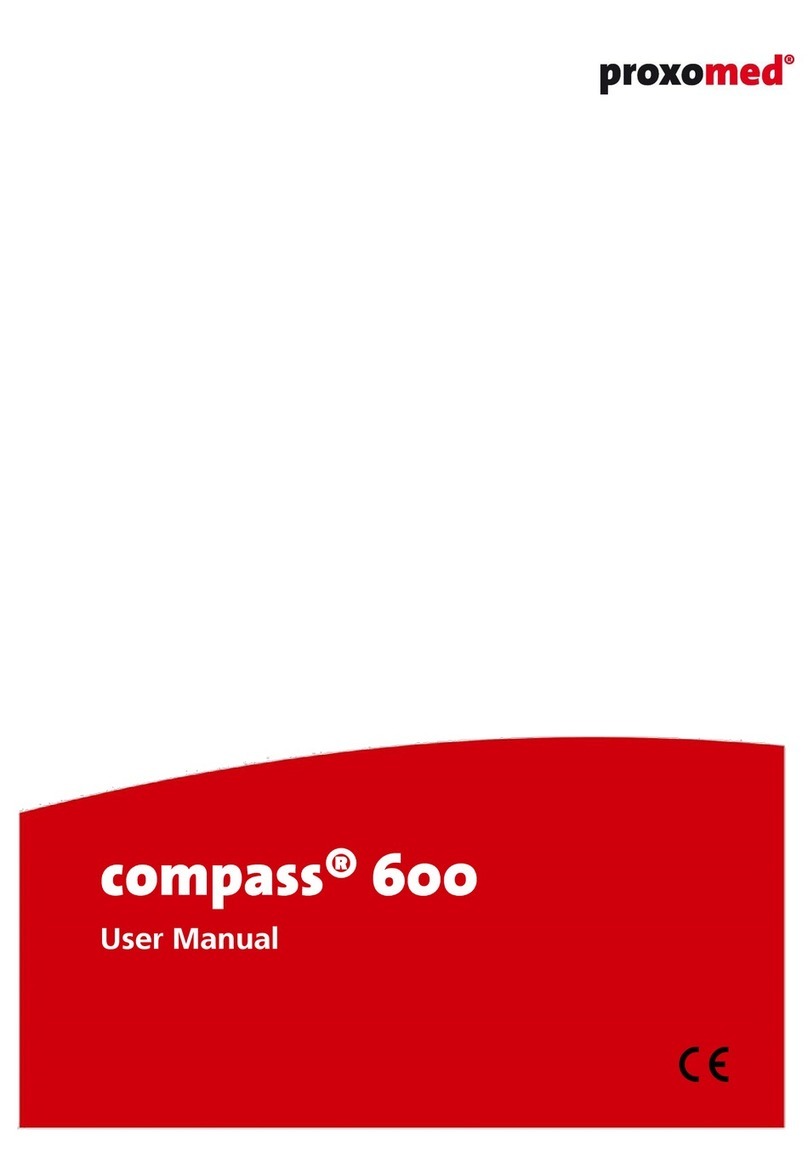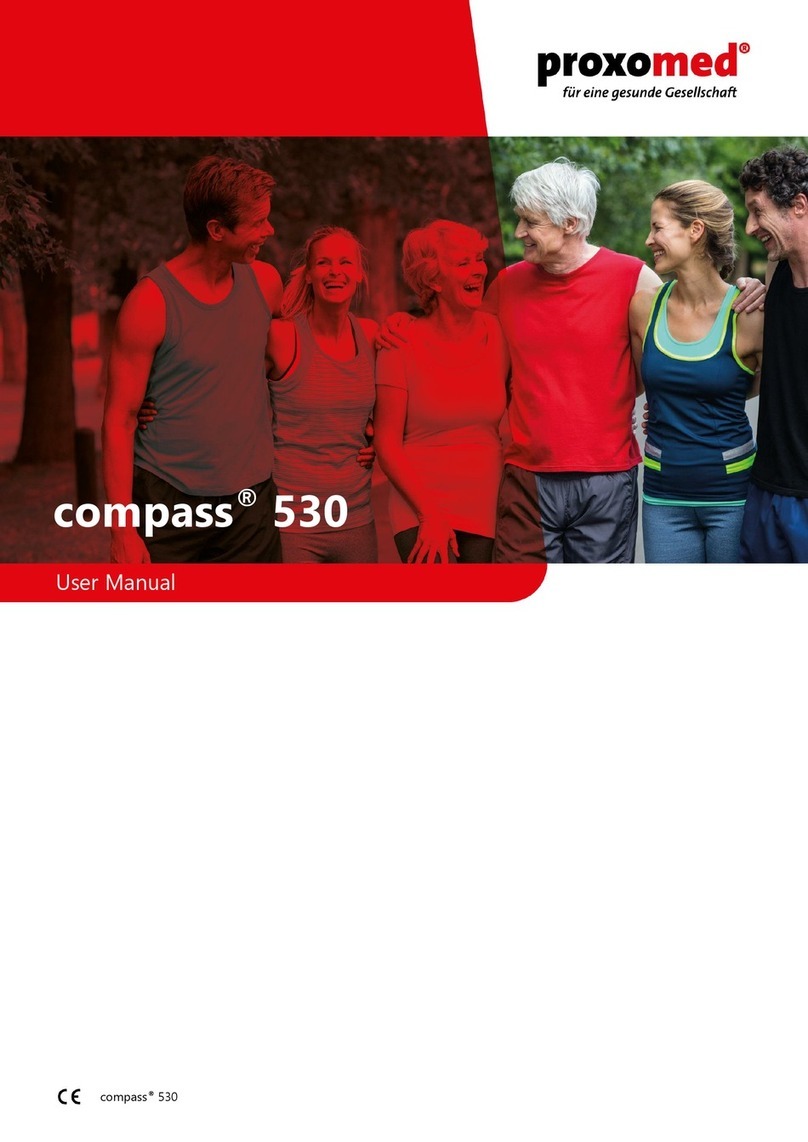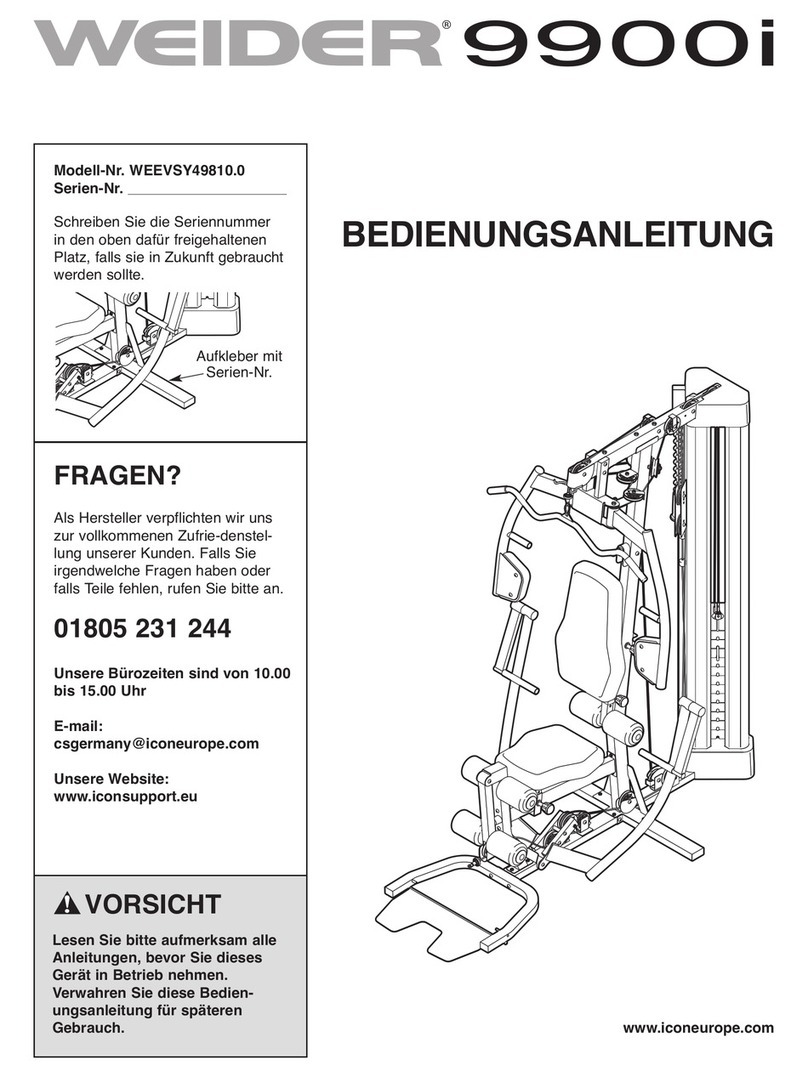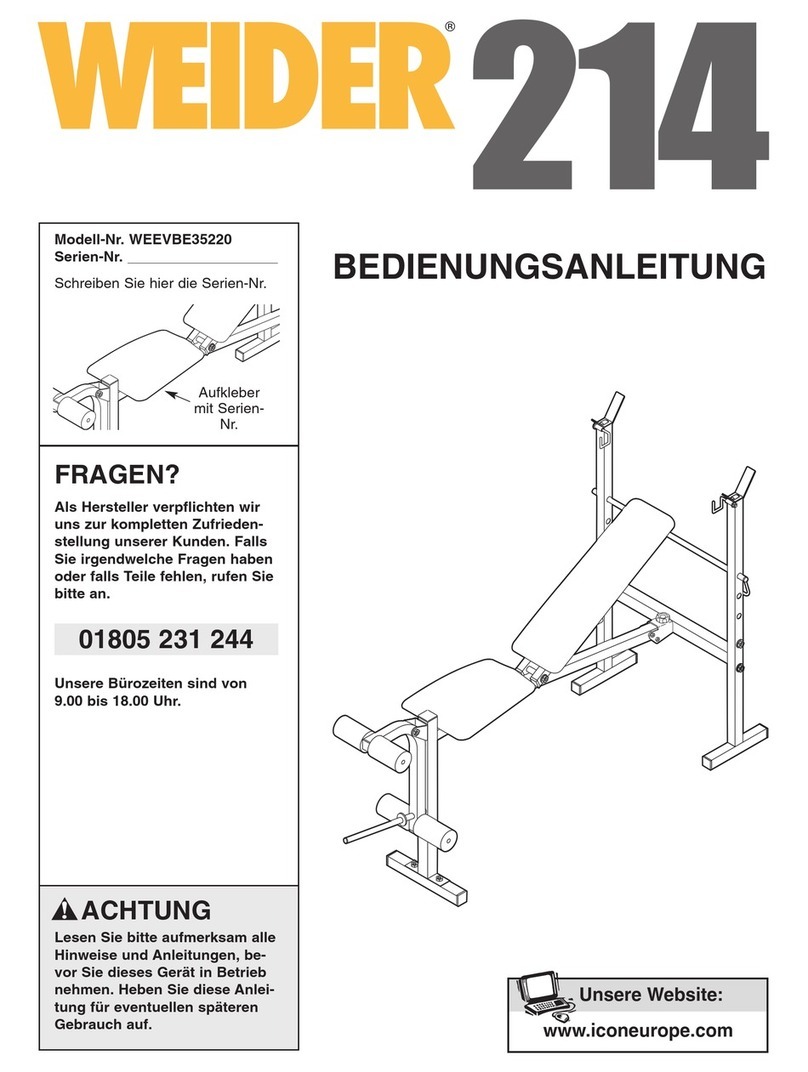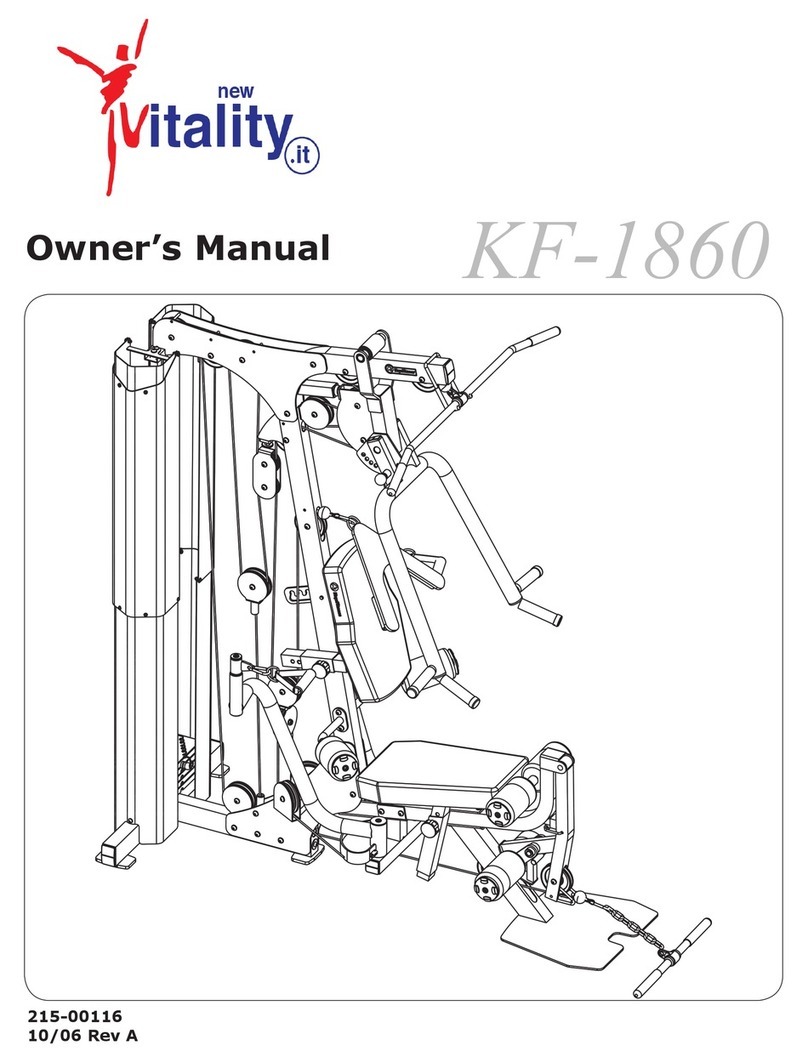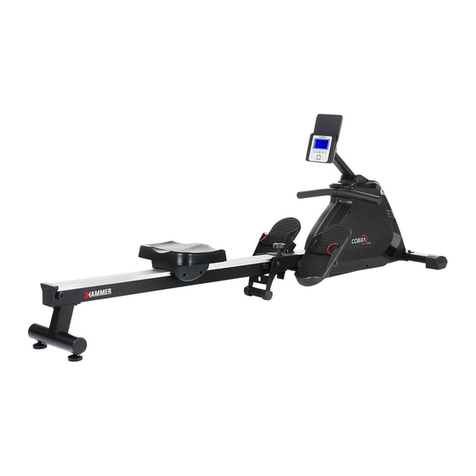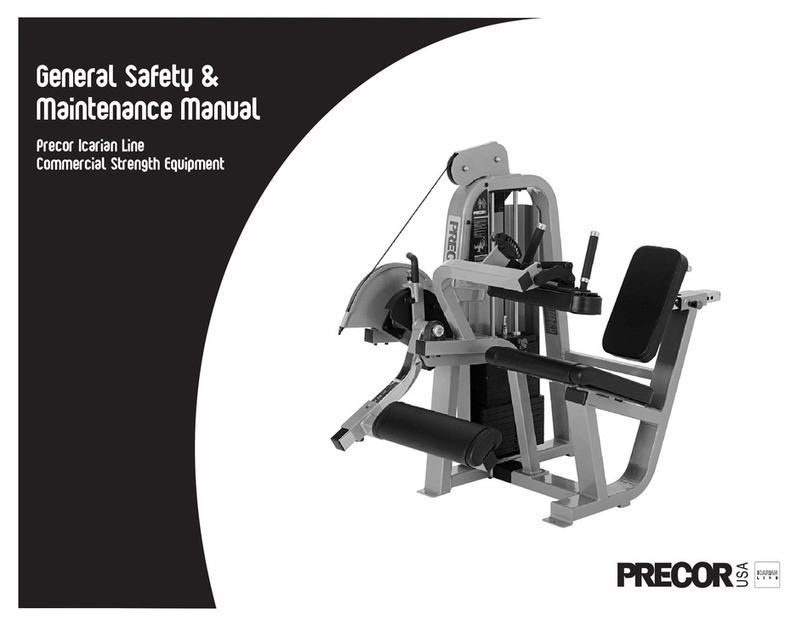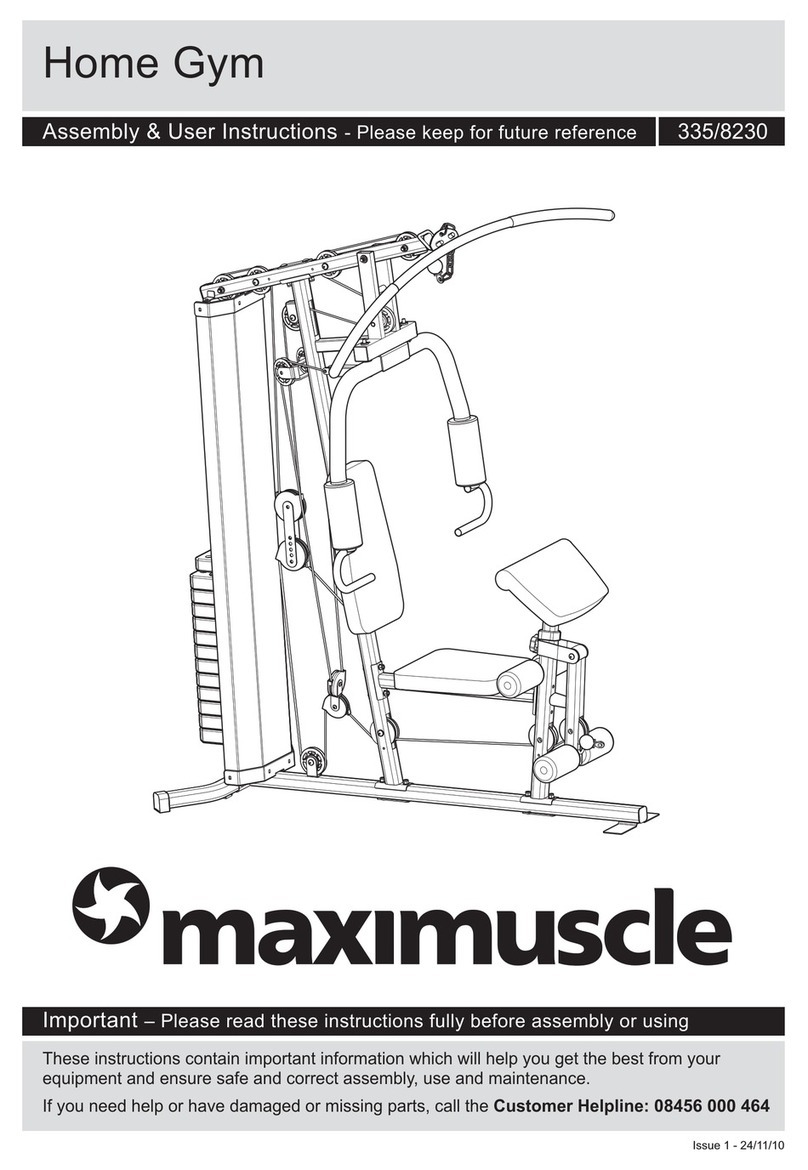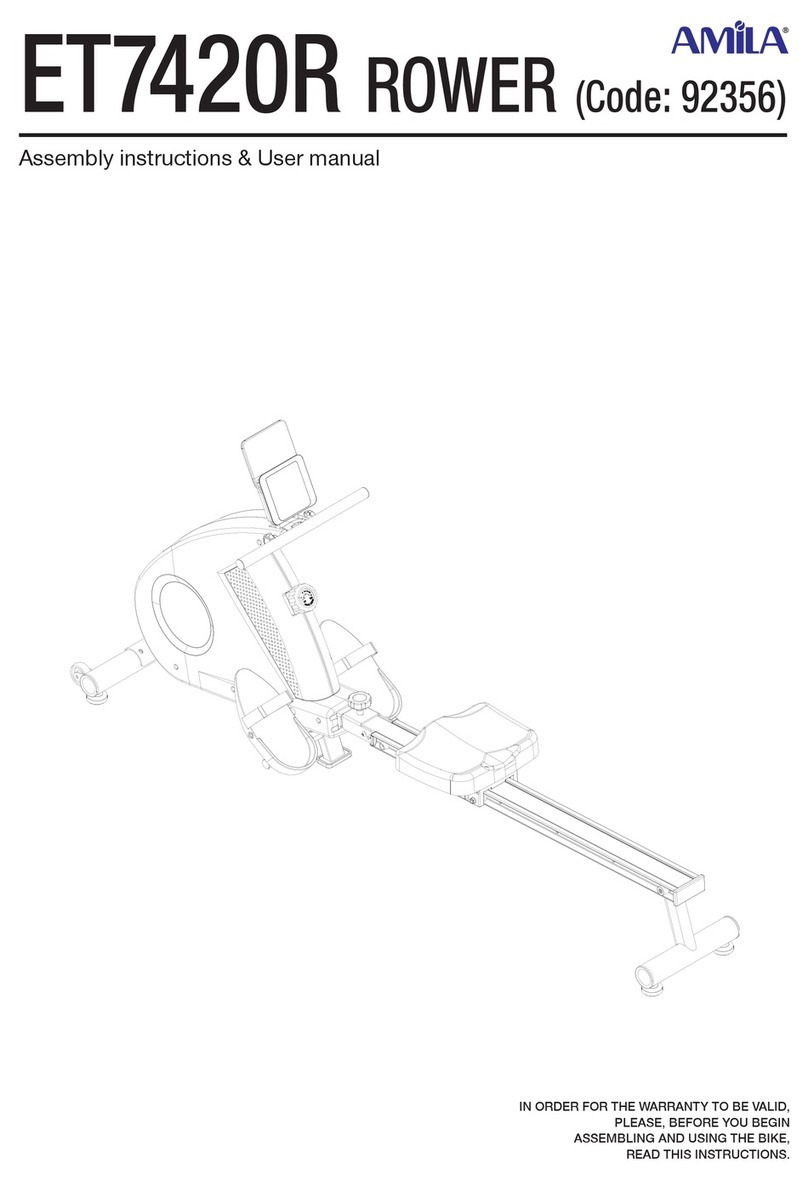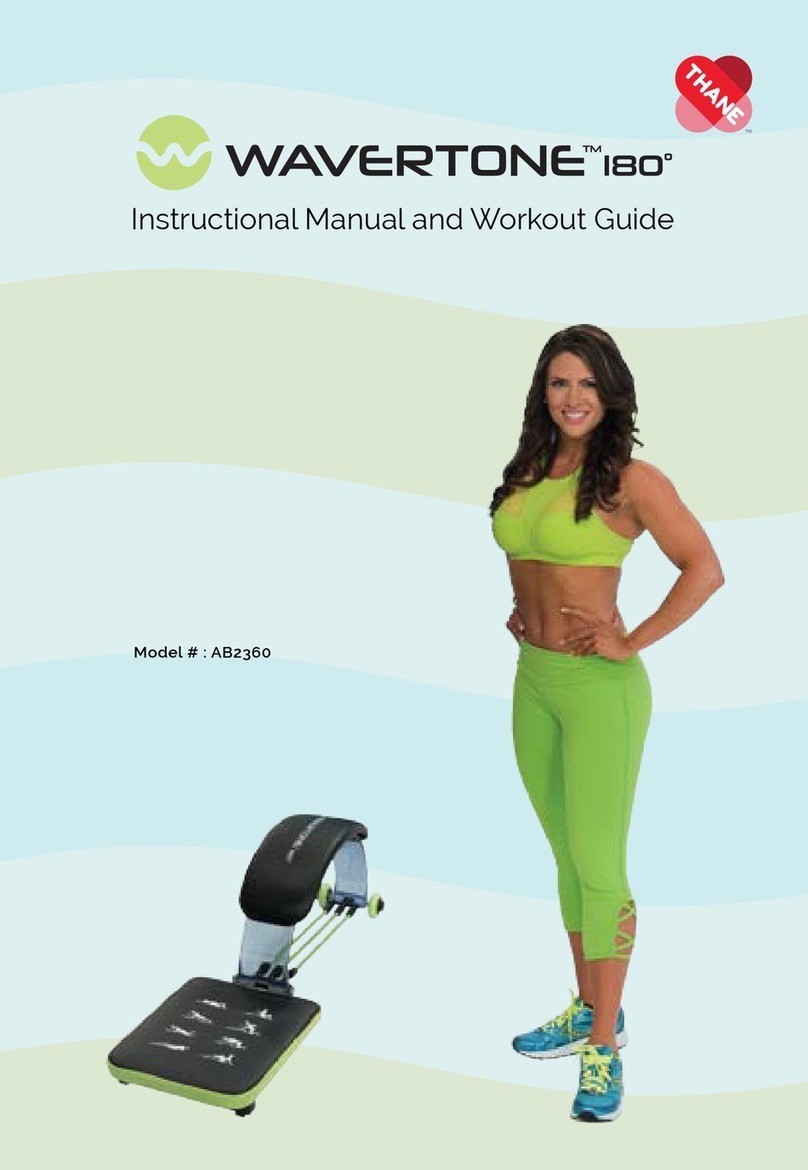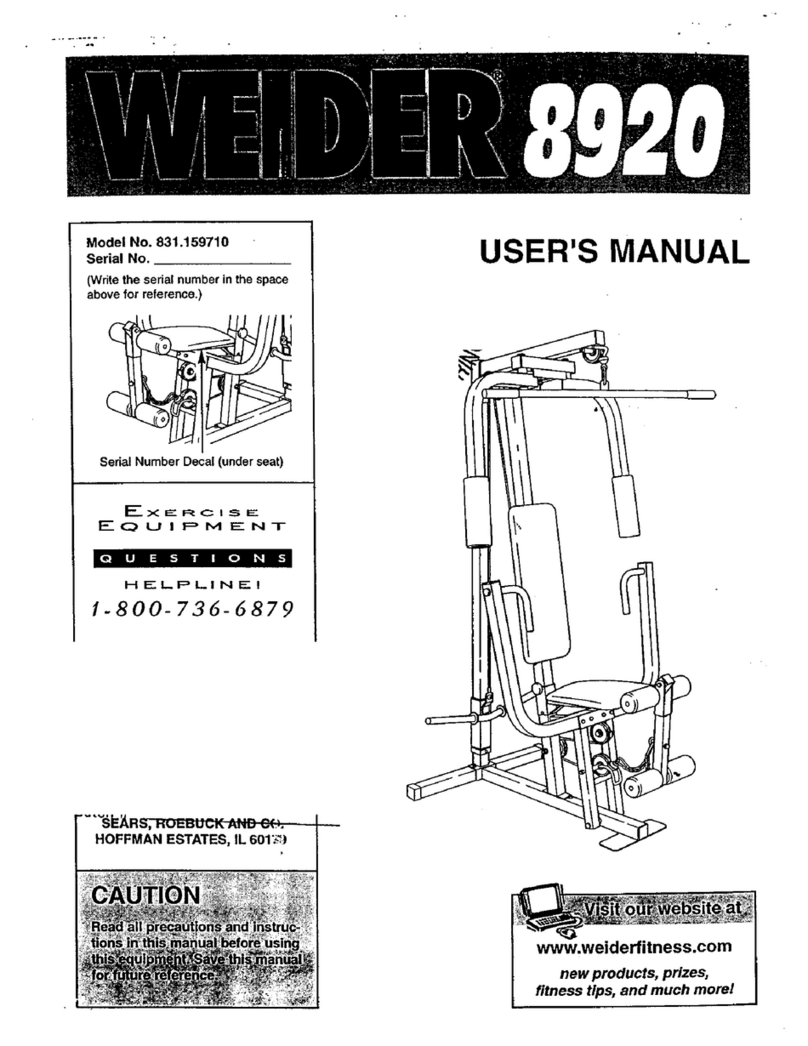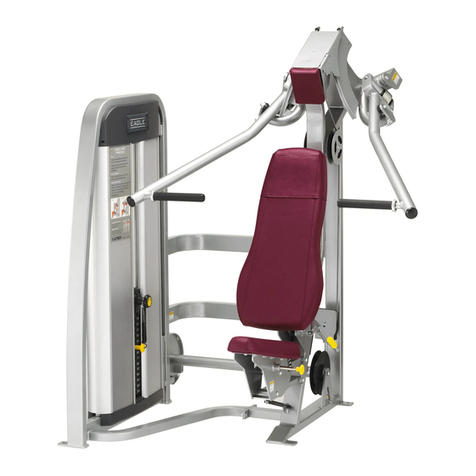Proxomed tergumed 600 Lateral Flexion User manual

tergumed ®600
Lateral Flexion
Rotation
User Manual

2
In this user manual you will find information on the following products:
tergumed® 600 Lateral Flexion
tergumed® 600 Rotation

3
1Foreword
Dear Customer,
We would like to thank you for the confidence you have placed in us by
purchasing products from proxomed Medizintechnik GmbH and for
sharing and supporting our vision of a healthy society. We are pleased that
our devices are in therapeutic use with you and support many patients in
their rehabilitation.
For more than 30 years, our customers worldwide have relied on our medical testing and training
systems. Our offerings as a full-service provider in active rehabilitation have grown continuously. In
addition to our core market in Germany, we are now represented in over 40 countries around the world
with our products and services for the benefit of a healthy society.
This success is based on the holistic understanding of the needs of our clients and their customers.
Maximum therapeutic success and personal quality of life improvement for all people are our incentive
in the changing healthcare system of the future.
For the health of your patients and the long-lasting use of our products, please read this manual carefully
with all important information for a safe and correct use of the devices.
In addition, take advantage of our favourable maintenance and support contract offers, which ensure
that the value of the device technologies and software packages used by your company is maintained
over the long term in accordance with the applicable Medical Device Operator Ordinance. If you have
any questions, please contact our service department.
Please keep the manual in a safe place and always have it available for further use.
Marcus Melching
CEO proxomed Medizintechnik GmbH

4
Table of Contents
1Foreword.................................................................................................................................... 3
2Notes on the user manual ........................................................................................................ 6
2.1 General symbolism........................................................................................................................................................6
2.2 Safety instructions (legend).......................................................................................................................................7
3Safety instructions .................................................................................................................... 8
3.1 Marking on the device.................................................................................................................................................8
3.2 Applied symbols for transport..................................................................................................................................9
3.3 Liability notice..............................................................................................................................................................10
3.4 Intended use.................................................................................................................................................................10
3.5 Indications and contraindications........................................................................................................................11
3.6 Patient target group..................................................................................................................................................11
3.7 Clinical benefit .............................................................................................................................................................11
3.8 Responsible operation..............................................................................................................................................11
3.9 Safety regulations.......................................................................................................................................................12
3.10 Combination with other products........................................................................................................................12
3.11 Side effects and residual risks................................................................................................................................12
3.12 Incident reporting.......................................................................................................................................................12
4Storage, transport and installation ....................................................................................... 13
5Commissioning........................................................................................................................ 15
6Training tips............................................................................................................................. 16
7Device descriptions ................................................................................................................. 18
7.3 tergumed ®600 Lateral Flexion .............................................................................................................................18
Intended use.......................................................................................................................................................18
Indications ...........................................................................................................................................................18
Settings................................................................................................................................................................. 19
7.4 tergumed ®600 Rotation .........................................................................................................................................21
Intended use.......................................................................................................................................................21
Indications ...........................................................................................................................................................21
Settings................................................................................................................................................................. 22
7.5 General training settings .........................................................................................................................................25

5
8Maintenance, cleaning, servicing, disposal........................................................................... 26
9Service...................................................................................................................................... 28
10 Accessories............................................................................................................................... 29
11 Technical data.......................................................................................................................... 31
12 Warranty .................................................................................................................................. 32

6
2Notes on the user manual
This user manual is part of the product and must be kept safe and accessible throughout
the product's service life. In the event of a change of ownership, the user manual must be
handed over to the new owner. If supplements to these instructions for use are supplied,
these must be added to the document.
2.1 General symbolism
Symbolism
Meaning
Adjustment range
•Indicates the range in which each setting can be made.
•The setting ranges are approximate values that may
vary depending on the setting element.
Rotational adjustment range: Top view
If the adjustment is made in
the horizontal direction, the
90° of the coordinate system
always point in the direction
of the backrest of the
training device.
Rotational adjustment range: View
If the setting is made in the
vertical direction, the 90° of
the coordinate system
always point upwards.

7
Linear adjustment range
If the adjustment is made in
a linear direction, the zero
point is at the bottom of the
exerciser.
Setting levels
•Indicates the number of steps and the distances in
the respective setting range.
•The setting levels are approximate values that may vary
depending on the setting element.
2.2 Safety instructions (legend)
The safety instructions presented in the operating instructions are categorized as follows:
Safety notice
Meaning
WARNING
WARNING
•Indicates a potentially dangerous situation.
•If the situation is not avoided, death or serious injury may
result.
CAUTION
CAUTION
•Indicates a potentially dangerous situation.
•If the situation is not avoided, an injury may result.
ATTENTION
ATTENTION
•Indicates a potentially harmful situation.
•If the situation is not avoided, the device may be damaged.

8
3Safety instructions
3.1 Marking on the device
Figure
Description
Reference
Follow the instructions for use
EN ISO 15223-1
Manufacturer, name, address, year of
manufacture
EN ISO 15223-1
123
CE Mark
EU 2017/ 745
Serial number
EN ISO 15223-1
Unique Device Identification
EU 2017/ 745
Medical Device
Multi-year inspection sticker
Next test date
(marked by perforation)
EN 62353
Nameplate
Manufacturer's identification, address, year of
manufacture, device designation, serial number,
UDI number and device-specific information.
EU 2017/ 745

9
Follow instructions
Is additionally attached to devices with
electrical components
ISO 15223-1
3.2 Applied symbols for transport
Figure
Description
Reference
TOP - top here
-
DO NOT stack
-
Protect from moisture
-
Temperature range
ISO 15223-1
Humidity
ISO 15223-1

10
3.3 Liability notice
The device is built according to the current state of the art and the recognized safety rules. Nevertheless,
danger to people and the device can arise in the event of impermissible misuse.
No design or development changes may be made to the device. The installation of additional
components or the removal of components is not permitted.
The device may only be used if it is in perfect technical condition and in the intended use described.
3.4 Intended use
The devices are manufactured according to the international standards EN ISO 20957-1 and EN ISO
20957-2 as class S (studio); they are intended for commercial use, e.g. in health-oriented fitness facilities
or physiotherapy practices for use on patients.
Before the start of the first training session, the patient(s) will be instructed by qualified personnel.
Training with patients may only be carried out under therapeutic supervision.
The device may only be used by adults (14 years and older); unsupervised children must be kept away
from the device.
The application is done in a sitting position.
The application is made only with intact skin.
If you feel unwell or have sudden symptoms, please stop training immediately and consult a doctor if
necessary.
To avoid injury, apply in tight-fitting clothing; tie up open, long hair if necessary.
Tergumed®devices are intended for indoor use only.
When using the devices with the smart assist option outside the German-speaking area, English
language skills are required for operation.
In case of deviations from the intended use, the manufacturer is not liable for damages.
CAUTION
Before starting the first training session, beginners and returners over 45 years of age
as well as people with existing illnesses and health problems should consult a doctor.

11
3.5 Indications and contraindications
The indications for the use of the devices in therapy are shown in chapter 7 of the respective device.
The devices are contraindicated and must not be used for the diseases listed below:
•Febrile diseases
•Current pain at rest or during activity as well as acute health complaints
•Existing pain in the musculoskeletal system, e.g. after stretches, strains, torn muscle fibres,
sprains and intervertebral disc protrusions
•Fresh fractures
•Osteoporosis in continued stages (grade 2 and 3)
•Hypertension in continued stages (grade 2 and 3 according to WHO)
•Artificial joint replacement of the knee and/or hip joint with unstable anchorage
•Severe neurological diseases with a tendency to muscle spasms
•Abdominal wall or inguinal hernia
•Pregnancy from the 2nd trimester
•Heart failure and coronary heart disease. Patients with high blood pressure may only use the
device after consulting their doctor*
3.6 Patient target group
The devices are intended for professional use in health care facilities, such as orthopedic and
physiotherapy departments in hospitals, rehabilitation clinics, etc. Depending on the indication, health
condition of the patient and treatment goal, the devices can be used in any phase of rehabilitation.
3.7 Clinical benefit
Tergumed®600 devices support physiotherapeutic interventions. The clinical benefit for the patient lies
in the complementary use of the devices and the resulting improved muscle stabilization.
3.8 Responsible operation
These operating instructions are intended for the operator and qualified personnel. All people working
on the device must be trained in its use and have read and understood the operating instructions
including the safety chapter.
Staff must be informed before therapy begins and at regular intervals about the nature and extent of
the activities and about possible hazards, such as any warnings.
Instruction on the equipment (therapist, trainer, fitness trainer) and monitoring (therapist, sports
therapist, fitness trainer) may only be carried out by trained specialist personnel. Authorisation from the
operator is required.
Adjustments must not be operated under load. Before each adjustment, make sure that there is no load
from a lifted weight block. This can impair the permanent functionality of the components.

12
3.9 Safety regulations
The device may only be used in technically perfect condition in the intended use. In the event of defects
or malfunctions, please block the device and contact the manufacturer's service department.
It must be ensured, especially when changing the position of the device without disassembly, that the
safe stand on level ground is guaranteed.
The protective cladding must not be removed. The device may only be operated with the protective
cladding fitted.
The warranty becomes void if modifications are made to the device or electronic devices for control and
measurement are attached that have not been carried out by specialist personnel authorised by the
manufacturer.
Defective parts of the device must be replaced immediately - in this case it is advisable not to continue
using the device until the repair has been carried out. Only original accessories should be used, otherwise
no liability will be accepted.
The device may only be opened by proxomed service or authorized personnel.
Do not place your hands between the moving bearings/rollers.
3.10 Combination with other products
Tergumed® 600 devices are equipped with the smart assist. smart assist is an active medical device from
proxomed Medizintechnik GmbH that contains software. The smart assist was developed and tested
according to EN 60601-1. For the use of the smart assist, the currently valid version of the user manual
of the smart assist (px power) must be consulted.
3.11 Side effects and residual risks
The devices are developed in such a way that no critical side effects can occur. Occasional side effects,
such as muscle soreness and joint pain, can occur, usually after incorrect ergonomic adjustment or after
too intensive training. These symptoms should disappear spontaneously after a few days.
3.12 Incident reporting
Please report any clinical events that occurred during and immediately after use of the device directly to

13
4Storage, transport and installation
The devices are usually delivered completely assembled. In rare cases, it may be necessary to ship the
devices partially disassembled for transport reasons. In these cases, please contact the service
department at service@proxomed.com.
Surroundings
●
Only in dry rooms free of seawater air (>65% humidity).
●
Avoid temperatures below 5 °C and above 45 °C.
●
Avoid placing the units in heavily frequented rooms or near doors and
passageways.
Substrate
●
The load-bearing capacity of the substrate must be appropriate to the
weight of the device.
●
Level and impact-resistant surface that can withstand the load of the
device and the maximum permissible body weight of the user of 200 kg.
●
Small unevenness of the floor can be compensated for by means of the
adjustable feet which can be attached to the unit.
●
Or a flat surface must be created by using suitable underlay material
made of shims or heavy-duty plastic.
●
The levelling materials should not be susceptible to rust.
●
When changing the position without dismantling the training device,
make sure that the device is standing securely on level ground.
●
For PVC floors: The rubber sheets can cause reactions with the PVC floor,
in this case use appropriate cork sheets.
Setting up the
device
●
Avoid hard, impact-like touching down of the devices.
●
Compensation of unevenness via adjustable feet, which can be adjusted
in height. Alignment with a spirit level.
●
Protect the devices from shocks, scratches and moisture.

14
Movement
dimension
●
In general, it is important to ensure that the distance of at least 60 cm
(starting from the movement dimension) to other devices is maintained
during installation. However, the safety clearances may overlap.
Area up to
next device
Active
Training area

15
5Commissioning
Check the technical condition of the training device before each use.
Locking bolt on function, the locking button must engage automatically.
Protective cladding - present or damaged.
Screw connections - check for tight connection.
Welded joints - visual inspection.
Movement limitation, if available as an option.
Accessories available/functional.
Check for safe stand.
Make sure that aids, accessories, cables, etc. are not within the range of motion.
ATTENTION
Before initial operation, the devices should stand at room temperature for at least 24
hours.
CAUTION
Before starting training, check the locking pins for tightness.
Do not pull on the locking bolts and pins during training.

16
6Training tips
The device must be adjusted to the ergonomic conditions of the user before the first training session.
The adjustment of the training device for the user is the responsibility of the qualified personnel.
•To avoid injuries and to make the training more effective, a general and special warm-up
program should be completed. This prepares the circulation and musculature for the loads.
•Select a safe and firm sitting position, with the pelvis and spine close to the seat. The back,
especially the lumbar spine, must be stabilised as best as possible during the exercise. If
available, the backrest is used to stabilise the spine.
•The correct positioning of the patient in the starting position contributes greatly to the quality,
effectiveness and safety of the exercise performance. The device axes and pivot points must be
adjusted as precisely as possible to the movement axes of the joints to be exercised in order to
avoid the occurrence of compression and shear forces.
•Perform the movement slowly and in a controlled manner.
•The intensity of the load should be chosen lightly at the beginning of the training. Increase the
load gradually to avoid overload and discomfort.
•The equipment allows for a double-legged or single-legged or double-armed or single-armed
workout.
•If mobility is restricted or pain occurs, immediately reduce the load and/or the extent of
movement.
•Training and therapy only take place in the pain-free area.
•During fast-impact exercises, the weight can be moved explosively. Controlled movement must
be ensured, especially with this training method, so that incorrect loads and injuries are avoided.
As a rule, concentric and eccentric ways of working the muscles are combined.
CAUTION
Improper or excessive training can lead to health problems.
CAUTION
Pressurized breathing and the associated increase in intrathoracic pressure
can lead to damage to the vascular system in patients at risk. Perform
movement slowly and in a controlled manner.
WARNING
If you experience rapid heartbeat, dizziness, shortness of breath, nausea or
chest pain, profuse sweating or headache, stop exercising immediately.

17
•Different training methods are used. If training is done according to the repetition method,
several series of exercises are performed with appropriate breaks.
•The load intensity is based on the load capacity of the individual indications, the rehabilitation
phase and the treatment goal. For example, in order to adapt and accustom the injured structure
(connective tissue, cartilage, tendons, ligaments and joint capsule), the focus can be on weight
bearing with low training intensity, before the training of special strength skills, such as strength
endurance or maximum strength, begins with increasing intensity.
•In order to be able to reproduce the training positions made by a therapist/trainer during a later,
possibly independent training, all adjustment devices are provided with scales and numbered
alphabetically (A, B, C, ...).
•With all devices there is the possibility to stabilize the patient/clients optimally during the
training.
WARNING
Risk of injury. Keep a safety distance of at least 60 centimetres from moving parts.

18
7Device descriptions
7.3 tergumed ®600 Lateral Flexion
Intended use
Tergumed ®600 Lateral Flexion is designed for muscular stabilization of the lateral trunk.
Indications
•Sarcopenia
•Osteoporosis
•Nonspecific pain in the lower spine
B/C - Armpit pads
A - Seat
Femoral fixation
D - Start angle
Weight Tower

19
Settings
A - Seat height
13 cm
stepless
B - Cushion inclination
5 cm
(0 - 10°)
stepless
C - Pad width
16 cm
(0 - 16 cm)
stepless

20
D - Start angle
60° - 120°
5 à 10°
E - Femoral fixation
-
stepless
This manual suits for next models
1
Table of contents
Other Proxomed Home Gym manuals
